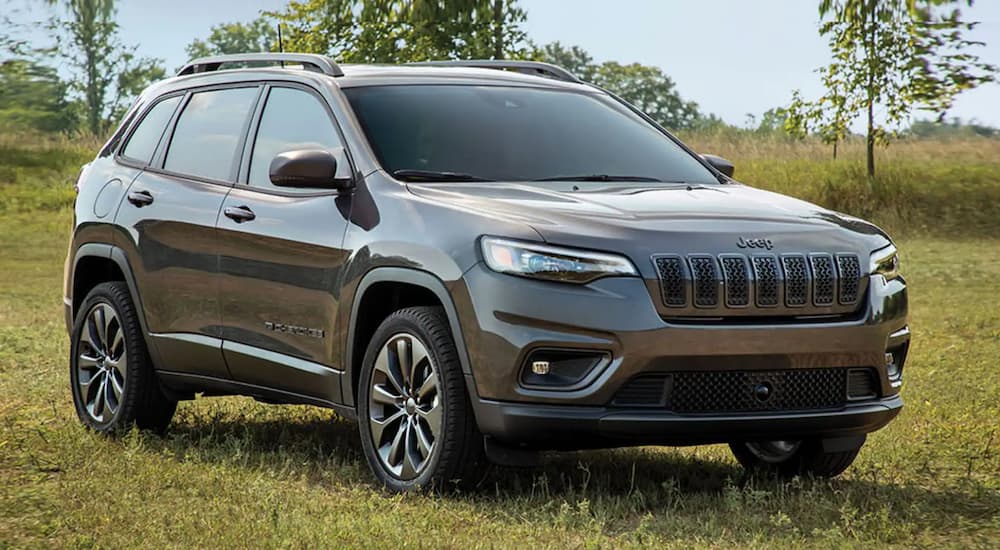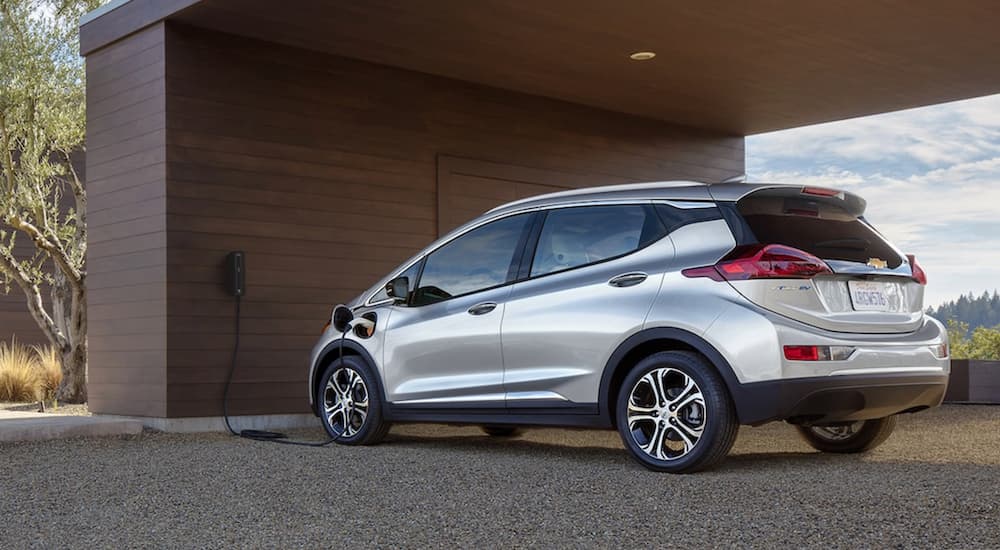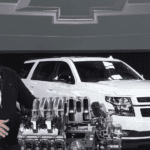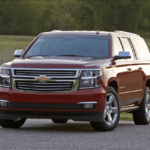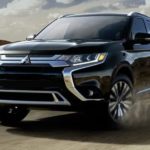The SUV has been around for a long time, originating somewhere between the 1935 Chevy Suburban and the 1946 Willys Jeep Station Wagon and really hitting its stride in the 1980s. Back then, SUVs were going everywhere and doing everything with style. However, the modern take on the SUV shares little in common with its predecessors. It tends to scream baby-on-board much more than rough-and-tumble, and this can be the source of much disgruntlement from enthusiasts of vintage SUVs, who are forced to resort to shopping for a used SUV for sale to get that old-school ruggedness they want. When did the SUV go soft, and why? One of the biggest forces shaping the modern SUV is safety. That’s right, there’s a lot more that goes into making a vehicle safer than adding airbags and seatbelts. Almost everything about the modern SUV has been impacted by safety, from how they drive to how they look.
Bye-Bye Boxy: How Safety Has Contributed to the SUV’s Silhouette
To me, there’s no SUV better looking than the 1984 Jeep Cherokee XJ. It is about as boxy as they came, with plenty of right angles and hardly a curved line on it. It sits tall and has steel front bumpers, making it great for off-roading. Unfortunately, the things that make these vintage SUVs look so good are also the things that make them incredibly dangerous. Cars with higher ground clearance have a higher chance of rolling over, which increases the likelihood of injuries to passengers inside the vehicle. And that boxy silhouette that we love so much? It’s not great for pedestrians, as I’m sure you can imagine.
Pedestrian safety is a huge part of why we’ve seen all vehicles—not just SUVs—adopt curvier shapes, particularly at their front ends. Steel bumpers have been largely nixed, and it isn’t just because automakers don’t wanna make ‘em like they used to. Vehicles are now designed with softer, shock-absorbing front bumpers that reduce the likelihood of severe injury if a collision with a pedestrian occurs.
Speaking of not making them like they used to, you may have heard someone lamenting over the fragility of modern cars. It seems like the smallest dings can send the vehicle’s body caving inward. Well, this is by design––and not because the automakers are trying to get more repair money out of you. Crumple zones protect the passengers when collisions occur, whereas cars with a sturdier build don’t absorb as much of the impact, increasing the chance of injuries.
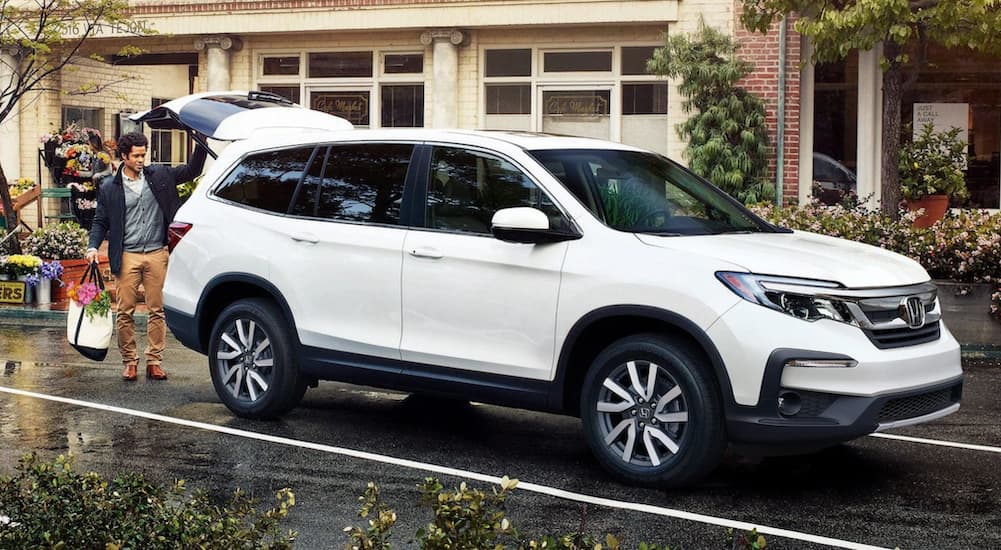
Less Driver Engagement: Driver Assistance Features
Crumple zones, seatbelts, and airbags have all revolutionized automotive safety, saving countless lives and preventing countless injuries. Now, driver-assist features are causing a safety revolution of their own, making cars far safer for both occupants and pedestrians. Not everyone is comfortable with the automated aspect of these features, and some drivers prefer to be in full control of their vehicles. Still, there’s no denying that they enhance safety. It’s becoming increasingly common for automakers to include standard driver-assist features in their models, regardless of trim level. Some of the most popular features include:
Automatic Emergency Braking
A vehicle equipped with automatic emergency braking uses cameras, radar, and sonar to detect obstacles. This could be a vehicle, large debris in the road, or a building. Most systems will first alert the driver to the potential collision. If the driver doesn’t take preventative action, the system escalates to automatic braking. This can help to reduce the severity of the impact or avoid the collision altogether.
Pedestrian Detection
This feature typically ties in with automatic emergency braking, adding another layer of safety. Pedestrian detection is exactly what it sounds like; cameras on the vehicle can tell if there’s a pedestrian in the vehicle’s path, and the car will brake to avoid colliding with them.
Lane-Departure Warning
Most of us have gotten sleepy while driving, maybe even dozed off. Rumble strips used to be the only protection against driver fatigue, but technology is advancing beyond grooves cut into the road. Lane-departure warning uses cameras to detect road lines and will alert the driver if they begin to drift out of their lane when the turn signal isn’t on. Some vehicles with lane-departure warning also have lane-keep assist, which will automatically steer the car back in its lane if needed.
Blind Spot Monitoring & Rear Cross-Traffic Alert
Blind spot monitoring acts like eyes in the back of your head. Most systems use radar in the rear bumper to cover your blind spots. If there’s a car detected in your blind spot, an icon will light up in the side mirror. The same sensors are used for rear cross-traffic alert. This driver-assist system is useful when backing out of a parking space or driveway. If it detects a vehicle traveling behind you, it will sound an alert so that you know to yield.
Cleaner Powertrains: Environmental Reform
Environmental wellness may not be the first thing you think of when talking about vehicle safety, but climate change is something that has the potential to affect everyone’s safety. That is why we’ve seen automakers take steps to mitigate the emissions their vehicles produce. Most have even made pledges to be carbon neutral within the next few decades. This means the days of big block, V8-powered SUVs are likely in the rearview mirror. There are already some options for hybrid, plug-in hybrid, and electric SUVs, and we’ll continue to see more being launched in the coming years.
An electric or hybrid SUV may not perform like one powered by a V8 or diesel, but this isn’t necessarily a bad thing. In fact, electric motors can actually be great for towing and off-roading because they don’t have to wait for the engine to get to a certain RPM to maximize torque. Electric motors can maximize torque instantly, which means plenty of power is always available, no matter the speed you’re traveling.
Sounding Safe
With electric vehicles becoming more commonplace, there are new safety challenges arising. EVs, as we know, run on electricity. That means the exhaust and engine sounds that have always alerted us to a vehicle’s presence are not present in EVs, and legislators took notice. A law was passed in 2010 that requires EVs to produce a warning sound at low speeds so pedestrians, especially those with impaired vision, will know the vehicle is there and can act accordingly. To that end, some automakers have hired sound engineers to craft unique noises for their EVs. Safety has opened up a new door in the automotive realm; we’ll likely see (or hear) sound become a part of a manufacturer’s brand. Ford EVs will have their own tones that are unique from Chevy EVs, and so on and so forth.
The Future of Automotive Safety
Modern SUVs may have a different look and feel to them, but if you ask me, it’s a fair price to pay for safety. It’s impossible to quantify exactly how many lives have been saved by these changes, but it’s surely no small number. Fans of vintage vehicles and driver engagement may not love the direction that vehicles are trending in, but hopefully, they can make their peace with modern cars, especially considering how much less dangerous they are to drive. Not all changes automakers implement are good ones, but if something is done to improve the safety of their cars for passengers and everyone else, you won’t hear any protests from me.
